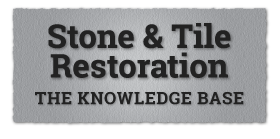Glossary of Terms
Glossary is usually defined as an alphabetical list of technical terms in some specialized field of knowledge. This knowledge base glossary provides a collection of knowledge base documents that define many technical terms. These terms are arranged alphabetically, but you can quickly jump to a specific term by selecting its first letter from the index of the knowledge base glossary below.
21 Glossary Terms Found.
BACK ARCH
A concealed arch carrying the back lug of a wall where the exterior facing is carried by a lintel
BACK FILING
Rough masonry built behind a facing or between two faces. Or, filling over the extrados of an arch; brickwork in spaces between structural timbers, sometimes called brick nogging
BACKING
The part of a veneer wall behind the exterior facing which is designed to resist load
BACKING ROD
A flexible and compressible type of closed cell-foam polyethylene, butyl rubber, or open cell and closed cell polyurethane, rounded at surface to contact sealant. It is installed at the bottom or rear of joint and often described as a filler strip
BANKER
A bench of timber or stone (may be a single block) on which stone is worked
BASALT
A dense textured (aphanitic) igneous rock relatively high in iron and magnesia minerals and relatively low in silica, generally dark gray to black, and feldspathic. A general term in contradistinction to felsite, a light colored feldspathic and highly siliceous rock or similar texture and origin. The colors of basalts are very dark green to black and often sold as granites, but unlike granites, basalt contains little or no quartz or feldspars
BASE BLOCK
The squared block terminating a baseboard at the opening
BASE COURSE
The lowest course or footing of a wall or pier
BATTED
Stone surface finish produced with parallel tool marks
BED
In granites and marbles a layer or sheet of the rock mass that is horizontal, commonly curved and lenticular as developed by fractures. Sometimes applied also to the surface of parting between the sheets. Or, in stratified rocks the unit layer formed by sedimentation; of variable thickness and commonly tilted or distorted by subsequent deformation; generally develops a rock cleavage, parting or jointing along the planes of stratification
BED JOINT
A horizontal joint between stones, usually filled with mortar, lead, or sealant
BEDDING PLANE
Horizontal plane of sedimentary stone in the position of its original formation. In the context of stone restoration, especially with materials like limestone, a bedding plane refers to the natural, flat layers within the stone. These planes were formed when the limestone was created over millions of years as layers of sediment settled and compacted. Understanding bedding planes is important for contractors because they can impact the durability and performance of the stone. For instance, limestone may be more prone to splitting or flaking along these planes, especially if the stone was installed with the bedding plane facing the wrong direction. This can affect how you approach restoration, as improper handling or aggressive techniques might cause damage along these natural layers.
BELT COURSE
A continuous horizontal course of flat stones place in line marking a division in the wall plane. Sometimes called band course, string course, or sill course
BENCH
Steps formed in quarry by removal of stone following bed joints. Or, a long seat of cubic stone
BERM
A bank of earth, such as the piled-up earth against a stone wall
BIOTITE
A black, brown, or dark-green mica, a magnesium iron silicate
BLACK GRANITE
Dark colored igneous rocks defined by geologists as basalt, diabase, gabbro, diorite, and anorthosite, quarried as building stone, building facings, and specialty purposes and identified as Black Granite when sold
BLEED
Staining caused by corrosive metals, oil-based putties, mastics, caulking, or sealing compounds
BLENDS
Mixes of different generic raw materials to form a water repellent
BLUESTONE
Regional sandstone quarried in the Catskill area of New York State and Western Pennsylvania
BRECCIA
Clastic sedimentary stone made by fragment angular rocks bonded together. It is divided in polygenetic breccia (when it is made by fragments of rocks with different mineralogy) or monogenetic breccia (when it is made by fragments of rocks of the same mineralogy). The matrix and bonding are generally clay, calcite and silica

